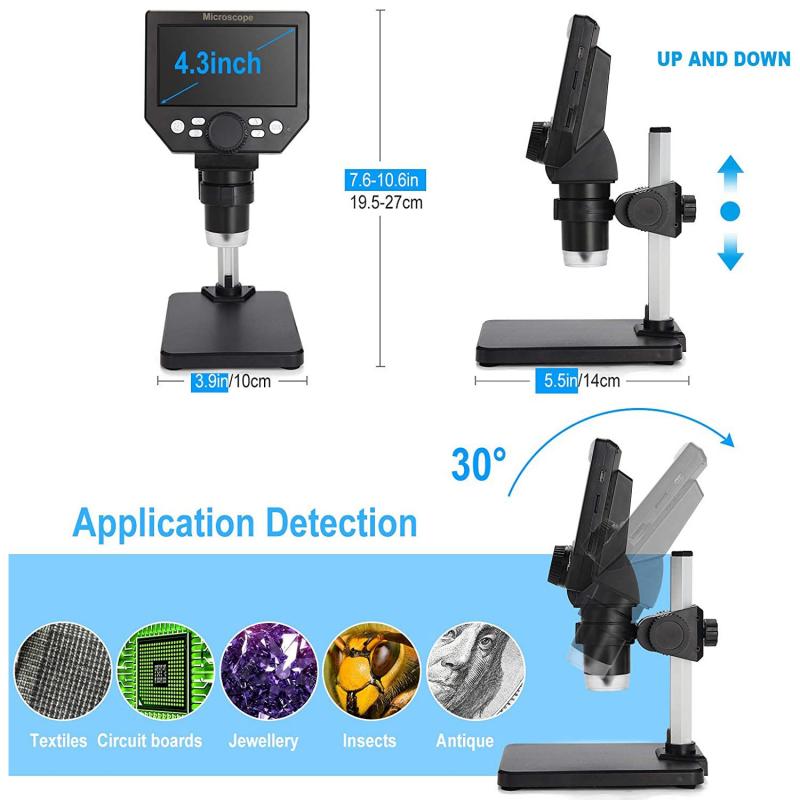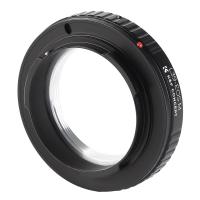What Did Robert Hooke See Under The Microscope ?
Robert Hooke observed various objects under the microscope, including plant cells, cork cells, and microscopic organisms. He is famously known for his discovery of cells in cork, which he described as small, box-like structures resembling the cells of a monastery. Hooke's observations of cells in cork were published in his book "Micrographia" in 1665, which played a significant role in establishing the cell theory. In addition to cork cells, Hooke also observed and documented the structure of various other biological specimens, such as insects, feathers, and fossils, using his microscope. His observations and illustrations in "Micrographia" greatly contributed to the advancement of microscopy and our understanding of the microscopic world.
1、 Microscopic organisms and cells
Robert Hooke, an English scientist, made significant discoveries under the microscope during the 17th century. One of his most notable observations was the existence of microscopic organisms and cells. Hooke's observations were documented in his book "Micrographia," published in 1665.
Under the microscope, Hooke observed a variety of specimens, including plant tissues, insects, and even human hair. However, his most groundbreaking discovery was the observation of cells. Hooke examined a thin slice of cork and noticed a series of small, box-like structures. He referred to these structures as "cells" due to their resemblance to the small rooms in a monastery.
Hooke's discovery of cells was a significant milestone in the field of biology. It laid the foundation for the cell theory, which states that all living organisms are composed of cells. This theory was further developed by scientists such as Matthias Schleiden and Theodor Schwann in the 19th century.
Since Hooke's time, advancements in microscopy techniques have allowed scientists to delve deeper into the microscopic world. With the advent of electron microscopy, researchers have been able to observe even smaller structures within cells, such as organelles and molecules. This has led to a greater understanding of cellular processes and the intricate mechanisms that govern life.
Furthermore, modern microscopy techniques have revealed the existence of previously unknown microscopic organisms. Microbes such as bacteria, archaea, and protists have been observed, providing insights into their diversity and ecological roles. Additionally, advancements in genetic sequencing have allowed scientists to study the genetic makeup of these organisms, further expanding our knowledge of the microscopic world.
In conclusion, Robert Hooke's observations under the microscope revolutionized our understanding of the microscopic world. His discovery of cells paved the way for the cell theory and subsequent advancements in biology. Today, microscopy continues to be a vital tool in scientific research, enabling us to explore and unravel the mysteries of microscopic organisms and cells.

2、 Cellular structures and organelles
Robert Hooke, an English scientist, made significant discoveries while examining objects under a microscope in the 17th century. One of his most notable observations was the identification of cellular structures and organelles. Hooke's observations were published in his book "Micrographia" in 1665, which laid the foundation for the field of cell biology.
Under the microscope, Hooke observed a thin slice of cork and noticed a series of small, box-like structures. He referred to these structures as "cells" due to their resemblance to the small rooms monks lived in, known as cells. Hooke's discovery of cells in cork was the first recorded observation of cellular structures, marking a pivotal moment in the history of science.
Since Hooke's initial observations, our understanding of cellular structures and organelles has significantly advanced. Modern microscopy techniques, such as electron microscopy, have allowed scientists to delve deeper into the intricacies of cells. We now know that cells are not just present in plants but also in animals and other organisms.
Furthermore, the development of advanced staining techniques has enabled scientists to identify and study various organelles within cells. These organelles include the nucleus, mitochondria, endoplasmic reticulum, Golgi apparatus, and many others. Each organelle has specific functions that contribute to the overall functioning of the cell.
Moreover, recent advancements in molecular biology and genetics have provided deeper insights into the molecular mechanisms that govern cellular processes. Scientists can now study the interactions between different organelles and understand how they work together to maintain cellular homeostasis.
In conclusion, Robert Hooke's observations under the microscope led to the discovery of cellular structures and organelles. Since then, our understanding of these structures has significantly advanced, thanks to modern microscopy techniques and molecular biology. The study of cellular structures and organelles continues to be a fundamental aspect of cell biology, contributing to our understanding of life at the microscopic level.

3、 Tissues and their composition
Robert Hooke, an English scientist, made significant contributions to the field of microscopy during the 17th century. One of his most notable achievements was his observation of tissues under the microscope. Hooke's observations revolutionized our understanding of the composition and structure of living organisms.
Under the microscope, Hooke observed a variety of tissues in plants, animals, and humans. He discovered that tissues are composed of cells, which he described as tiny, box-like structures. Hooke coined the term "cell" to describe these basic building blocks of life. His observations laid the foundation for the cell theory, which states that all living organisms are composed of cells.
Hooke's observations also revealed the intricate organization and complexity of tissues. He observed that different tissues have distinct structures and functions. For example, he observed the arrangement of cells in plant tissues, such as the xylem and phloem, which are responsible for transporting water and nutrients throughout the plant. In animal tissues, Hooke observed the presence of muscle fibers, nerve cells, and connective tissues, which play crucial roles in movement, sensation, and support.
Since Hooke's time, our understanding of tissues and their composition has advanced significantly. Modern microscopy techniques, such as electron microscopy, have allowed scientists to delve deeper into the cellular and molecular structures of tissues. We now know that tissues are not only composed of cells but also contain extracellular matrix, which provides structural support and regulates cell behavior.
Furthermore, recent advancements in molecular biology have revealed the complex interactions between cells within tissues. Scientists have discovered that cells communicate with each other through chemical signals, allowing them to coordinate their activities and maintain tissue homeostasis. This understanding has led to breakthroughs in regenerative medicine, tissue engineering, and the treatment of various diseases.
In conclusion, Robert Hooke's observations of tissues under the microscope were groundbreaking and laid the foundation for our understanding of the composition and structure of living organisms. His discovery of cells and their organization within tissues has paved the way for further advancements in the field of biology. With the advent of modern microscopy techniques and molecular biology, our understanding of tissues continues to evolve, leading to new insights and applications in various fields of science and medicine.

4、 Microscopic details of plants and animals
Robert Hooke, an English scientist, made significant contributions to the field of microscopy during the 17th century. One of his most notable achievements was his book "Micrographia," published in 1665, where he documented his observations using a compound microscope. In this groundbreaking work, Hooke described and illustrated various microscopic details of plants and animals.
Under the microscope, Hooke observed and documented the intricate structures of plant cells, including the cell walls and the empty spaces within them, which he named "cells" due to their resemblance to small rooms or cells in a monastery. He also observed and described the structure of cork, noting the presence of tiny compartments that he called "cells" as well. This discovery laid the foundation for the cell theory, which states that all living organisms are composed of cells.
Hooke's observations extended beyond plants to include animals as well. He examined the compound eyes of insects, the structure of feathers, and the microscopic details of various animal tissues. Hooke's work provided valuable insights into the organization and complexity of living organisms at a microscopic level.
It is important to note that Hooke's observations were limited by the technology available at the time. The microscopes he used had relatively low magnification and resolution compared to modern microscopes. Therefore, while Hooke made groundbreaking discoveries, his observations were limited to the macroscopic structures visible under his microscope.
In recent years, advancements in microscopy techniques, such as electron microscopy, have allowed scientists to delve even deeper into the microscopic world. With these modern tools, researchers have been able to explore the ultrastructure of cells, revealing intricate details that were beyond Hooke's reach. Nonetheless, Hooke's pioneering work laid the foundation for the field of microscopy and provided a starting point for further exploration of the microscopic world.







































There are no comments for this blog.